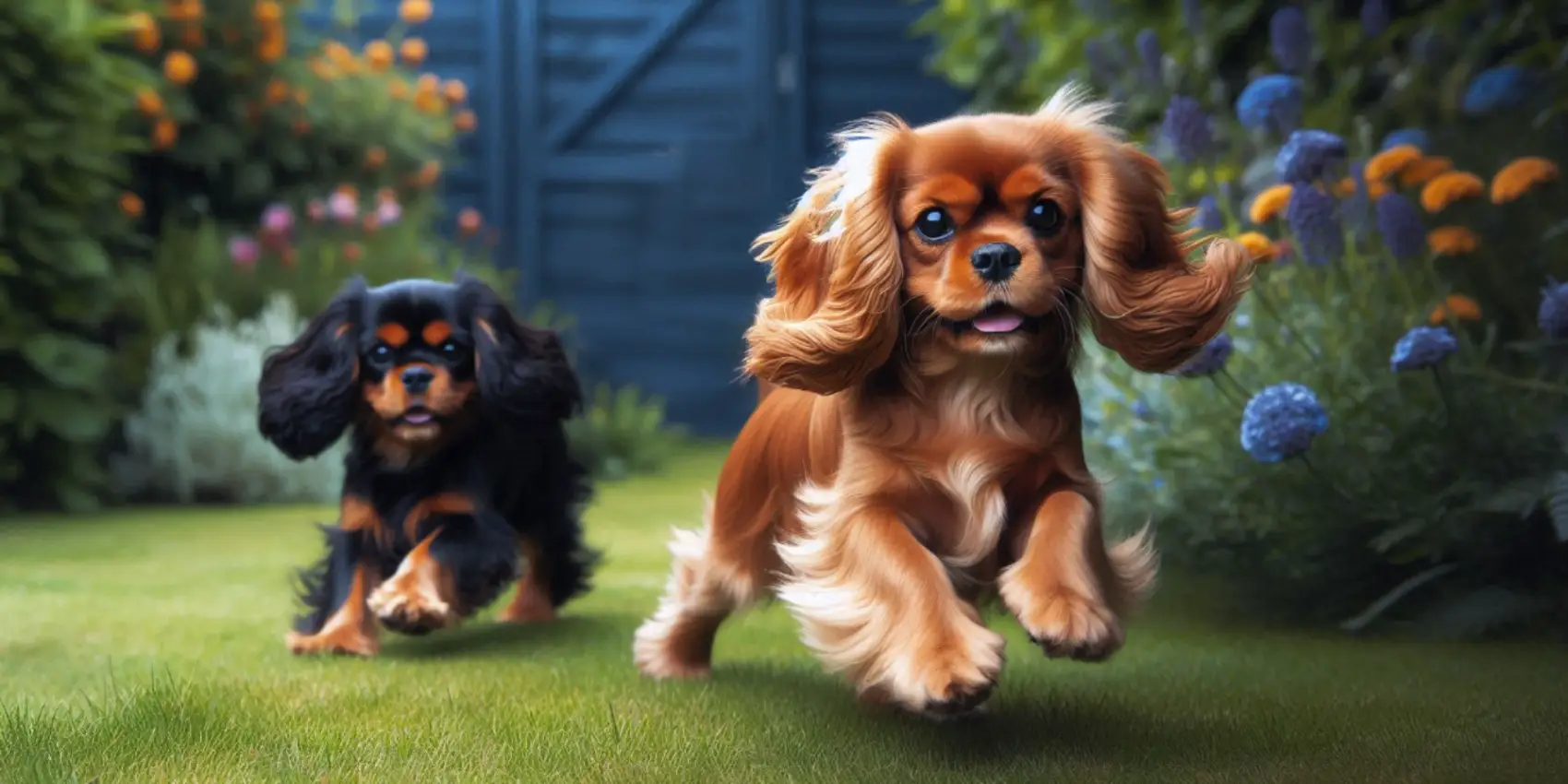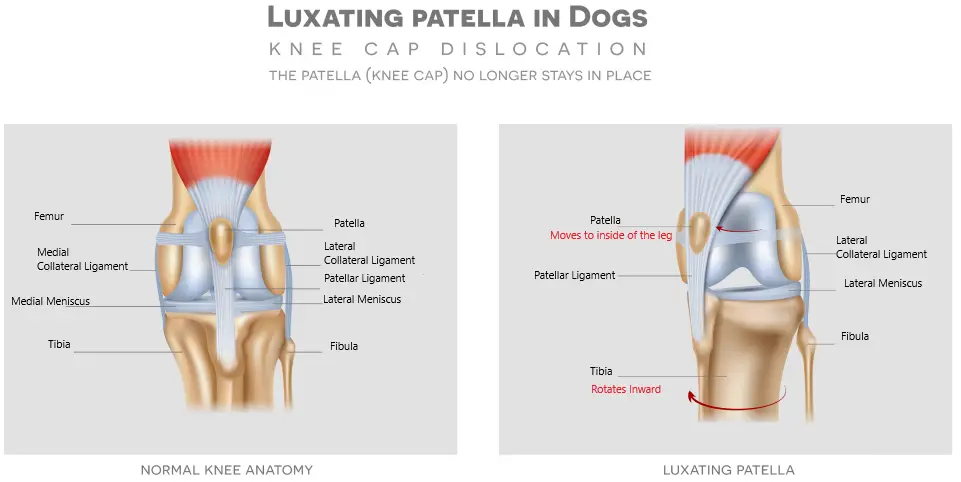
Luxating Patellas in Dogs: A Focus on the Cavalier King Charles Spaniel
Luxating patellas, or patellar luxation, is a common orthopedic condition in dogs, particularly prevalent in smaller breeds like the Cavalier King Charles Spaniel. This condition occurs when the patella (kneecap) dislocates or moves out of its normal position, leading to pain, discomfort, and mobility issues.
Understanding Patellar Luxation
Patellar luxation is classified into four grades based on severity:
Grade I: The patella can be luxated (dislocated) but returns to its normal position spontaneously. Dogs with Grade I luxation may show little to no symptoms and often go unnoticed.
Grade II: The patella luxates with manual pressure but returns to position when released. These dogs may exhibit occasional lameness or skipping in their gait.
Grade III: The patella is permanently luxated but can be manually replaced. Dogs may show more significant discomfort and altered movement patterns.
Grade IV: The patella is permanently luxated and cannot be manually repositioned. This is the most severe form and often requires surgical intervention for proper management.
Causes of Patellar Luxation
The dislocation of the patella can be attributed to several factors:
Genetics: Many dogs, especially small breeds like Cavaliers, inherit anatomical traits that predispose them to patellar luxation. Breeds with a shallow trochlear groove or other structural abnormalities are more vulnerable.
Bone and Joint Structure: Abnormalities in the alignment of the bones and joints can lead to improper tracking of the patella. In Cavalier King Charles Spaniels, the shallow groove in the femur often fails to secure the patella, allowing it to slip out of place.
Muscle and Ligament Weakness: Weak or imbalanced muscles surrounding the knee can contribute to instability. The quadriceps muscles, which help hold the patella in place, must be strong enough to support proper knee function.
Trauma: Acute injuries, such as falls or accidents, can cause or exacerbate patellar luxation by shifting the patella out of its normal position.
Developmental Factors: Conditions such as hip dysplasia or abnormal growth patterns in puppies can lead to misalignment of the patella.

Symptoms to Watch For
Symptoms of patellar luxation can vary significantly based on the severity of the condition. Common signs include:
Lameness or Skipping: Dogs may skip or favor one leg when walking, especially after periods of rest.
Difficulty with Mobility: Issues such as reluctance to climb stairs, jump, or participate in physical activities are common.
Abnormal Gait: A “bunny hopping” motion may occur, where the dog moves both hind legs together instead of alternating them.
Signs of Pain: Dogs may exhibit signs of discomfort when the knee is manipulated, including yelping or pulling their leg away.
Muscle Atrophy: Over time, affected dogs may develop muscle wasting in the hind leg due to reduced usage.
Diagnosis and Treatment
Diagnosis of patellar luxation typically involves a thorough physical examination by a veterinarian. The vet may manipulate the patella to assess its stability and may also perform X-rays to evaluate the severity of the luxation and rule out any other underlying issues.
Treatment options vary depending on the severity of the condition:
Conservative Management: For Grade I and some Grade II cases, treatment may involve:
Weight Management: Keeping the dog at a healthy weight to reduce strain on the joints.
Physical Therapy: Targeted exercises to strengthen the muscles around the knee and improve joint stability. This can include hydrotherapy, massage, and specific exercises prescribed by a veterinary physiotherapist.
Medication: Anti-inflammatory medications (like NSAIDs) may be prescribed to alleviate pain and inflammation. Supplements such as glucosamine and chondroitin sulfate may also support joint health.
Surgical Intervention: More severe cases (Grade III and IV) often require surgery, which may include:
Tibial Tuberosity Transposition: This procedure involves moving the tibial tuberosity to realign the patella and keep it in place. This helps prevent future dislocations.
Groove Deepening: The surgical creation of a deeper trochlear groove to better accommodate the patella, reducing the chance of it slipping out of position.
Soft Tissue Procedures: Tightening or repairing ligaments and soft tissues around the knee can help stabilize the joint. This may include medial patellar ligament desmotomy or other techniques to balance the soft tissue around the knee.
Patellar Stabilization Techniques: In some cases, techniques such as lateral imbrication or medial release may be used to reposition the soft tissues around the patella to help keep it aligned.
Prevention and Care
While not all cases of luxating patellas can be prevented, there are steps that Cavalier owners can take to reduce the risk:
Select a Responsible Breeder: Choose breeders who perform health screenings and prioritize the overall health of their breeding dogs.
Regular Veterinary Check-ups: Routine visits can help catch potential issues early. Vets may recommend routine assessments for breeds like Cavaliers that are prone to orthopedic issues.
Maintain a Healthy Weight: Obesity can exacerbate joint problems, so a balanced diet and regular exercise are essential.
Avoid High-Impact Activities: Limiting activities that stress the joints, such as jumping from heights, can help protect the knees.
Early Intervention: If you notice any signs of discomfort or unusual behavior in your Cavalier, consult your veterinarian promptly to prevent further complications.
Conclusion
Luxating patellas are a significant concern for many dog breeds, including the Cavalier King Charles Spaniel. Understanding the condition, recognizing the symptoms, and working closely with a veterinarian for appropriate management can help ensure a good quality of life for affected dogs. With the right care—be it through conservative management or surgical intervention—many Cavaliers that exhibit patellar luxation can continue to lead active, happy lives despite this orthopedic challenge. Awareness and proactive steps can make a crucial difference in the health and well-being of these beloved companions.
